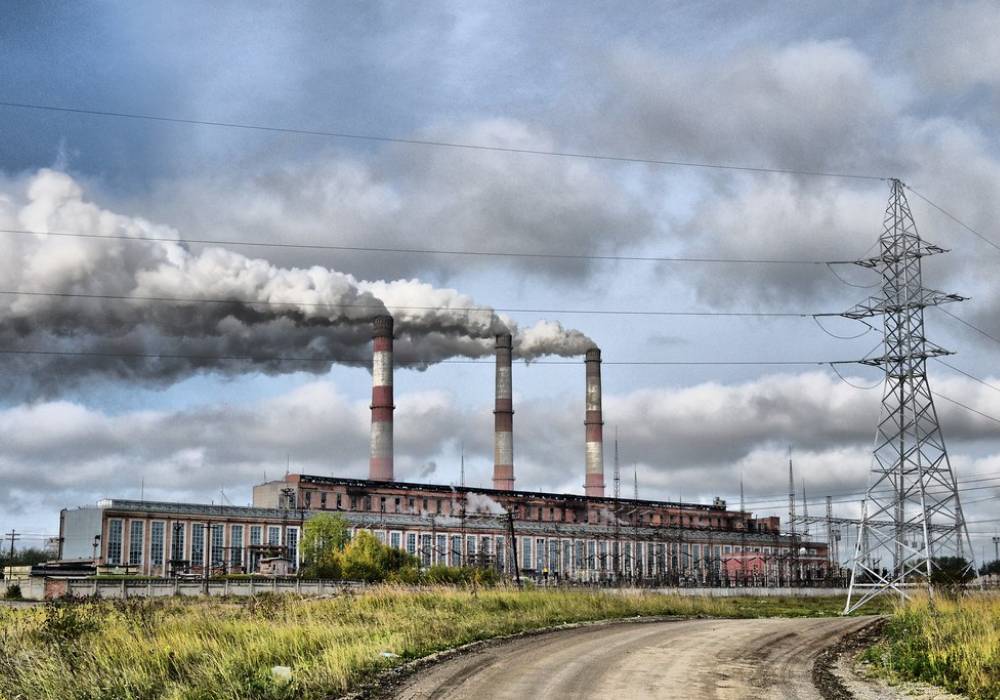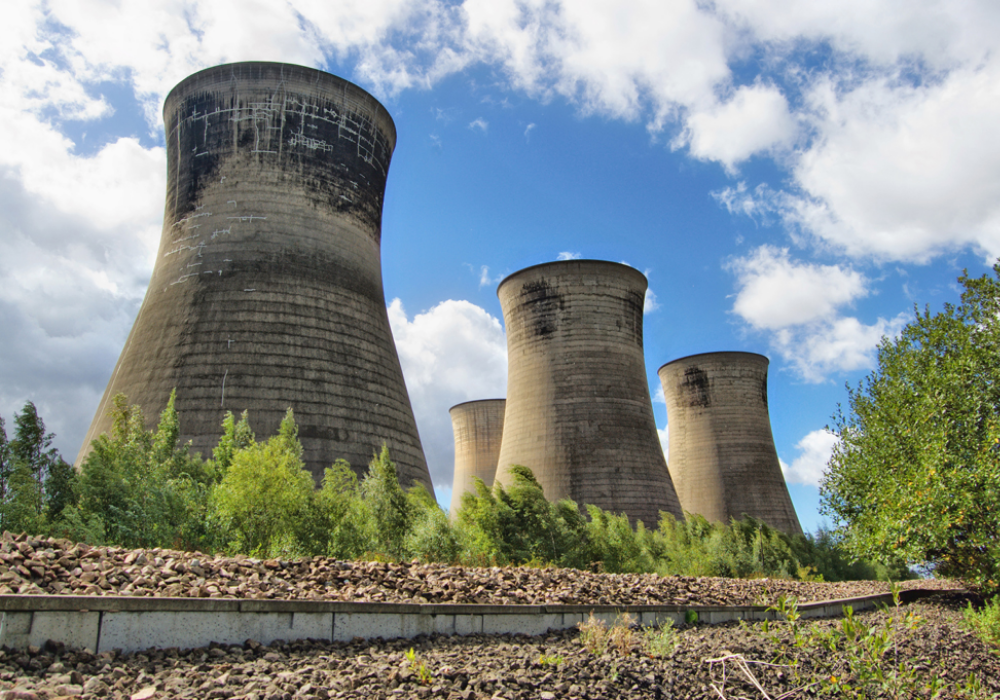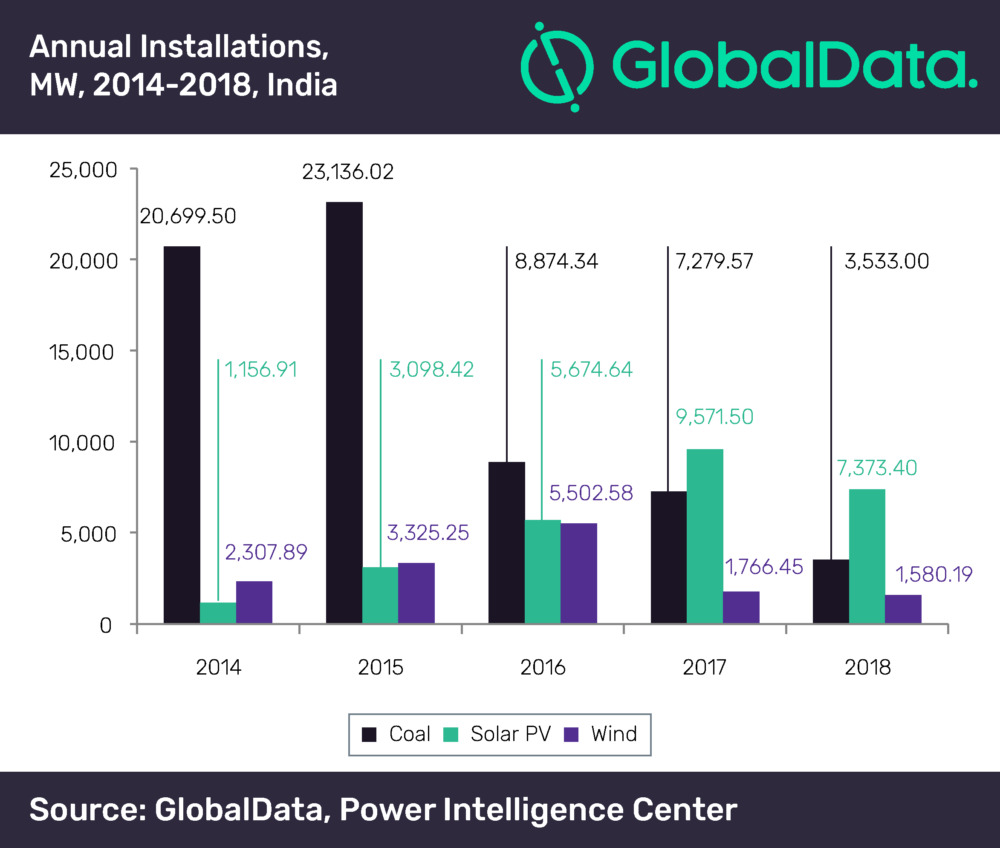
India’s government has proposed a carbon tax waiver that may pose a risk to its renewable energy growth, according to an industry analyst.
In December, the country’s prime minister, Narendra Modi, suggested a withdrawal of the carbon tax of INR400 rupees ($5.61) per tonne levied on the production and import of coal.
His office claims the savings would improve the significant debt levels in the power industry, while also helping energy providers to install pollution-curbing technology.
But Mohit Prasad, project manager at data and analytics firm GlobalData, claims the waiver is likely to harm the growth of renewable energy.
“The power sector in India is mainly driven by the non-renewable energy sector with coal contributing more than 55% of the country’s installed capacity,” he said.
“The coal-based power sector, which had witnessed cancellations of projects and competitions from renewable sources after the cost of renewables in India fell below that of coal and gas-based power, will now regain momentum”
Impact of the carbon tax waiver on renewable energy in India
Although India has one of the lowest emissions levels per capita in the G20, the country is the third-highest emitter of CO2 behind China and the US — contributing 7% of global emissions last year.
In 2015, the government set an emissions standard for air pollution from coal plants to reach by 2017 — but the Supreme Court of India pushed back the deadline to 2022 after plants failed to reach their targets.

According to Reuters, the country’s coal-fired plants are set to miss a phased deadline — starting in December — to cut CO2 from sulphur oxides, which are believed to contribute to lung disease.
The possibility of a coal waiver comes as welcome news to the industry, which has been lobbying the government after building up debts with state-backed power suppliers worth up to $11bn as of October.
Prasad said the proposed waiver has been announced at a time when most of the renewable energy auctions in India are becoming undersubscribed.
“The fall in tariffs under the auction mechanism has been putting pressure on the margins of project developers, thereby reducing the economic feasibility of project pipeline in the renewable energy sector,” he added.
“This is manifesting itself in the under-subscription of the auctions that have been seen in recent times.”
A major technical challenge with renewable energy is intermittency, resulting in low utilisation of transmission infrastructure. To combat this, India’s Ministry of New and Renewable Energy (MNRE) has issued a draft policy for the supply of round-the-clock (RTC) power from renewable energy sources complemented with thermal power projects.
Prasad added: “To address this low utilisation of transmission infrastructure, ‘reverse bundling’ would be utilised so that high-cost thermal power is bundled with low-cost renewable energy to provide RTC power to distribution companies.
“The two measures are together expected to reverse the declining trend in coal-based capacity additions.”
Plans to increase renewable energy capacity in India
GlobalData’s analysis shows annual installations of coal-fired plants have dipped since 2016, with the decline continuing until 2018.
During the same period, solar PV installations increased significantly, mainly driven by competitive auctions.

In 2018, the country launched its National Electricity Plan (NEP) to transform its energy sector.
India has now emerged as one of the leading countries for clean technologies and looks set to cross the 100 gigawatts (GW) renewable energy capacity mark by the end of this year — with plans to hit 275GW by 2027 and 400GW by 2030.
But the NEP also includes plans for more than 90GW of planned coal-fired capacity, which will likely increase emissions and could lead to assets becoming stranded.






